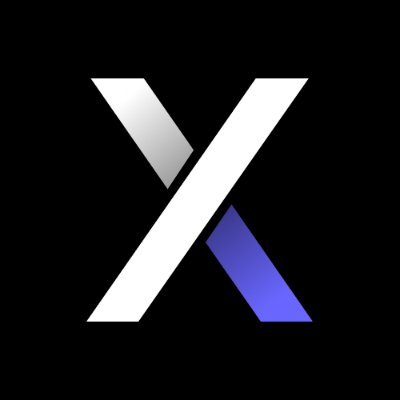dYdX价格
(美元)了解dYdX
免责声明
请参阅我们的 使用条款 和 风险警告,了解更多详情。通过使用第三方网站(“第三方网站”),您同意对第三方网站的任何使用均受第三方网站条款的约束和管辖。除非书面明确说明,否则欧易及其关联方(“OKX”)与第三方网站的所有者或运营商没有任何关联。您同意欧易对您使用第三方网站而产生的任何损失、损害和任何其他后果不承担任何责任。请注意,使用第三方网站可能会导致您的资产损失或贬值。本产品可能无法在所有司法管辖区提供或适用。
dYdX 的价格表现
dYdX 社交媒体动态
快捷导航

欧易新手学院:dYdX 专题
dYdX 常见问题
dYdX 是一个先进的交易所,支持现货,保证金杠杆和永续合约交易。交易者可以直接访问该平台,而无需将资产移交给中心化实体。该平台由 以太坊上的智能合约提供支持,使 dYdX 成为一个开放、无需许可和非托管的 DEX。DYDX 是交易所原生治理代币。
dYdX 提供各种交易工具和功能,帮助更快、更好的交易执行,平台的安全性和透明度都非常优异。此外,在实施第二层伸缩解决方案后,已经没有了手续费,这也让交易者可以访问更多的交易对。
非托管的 dYdX 交易所为其所有服务使用智能合约。在 dYdX 上市的每种资产都有自己的贷款池。
贷款人和借款人在这样的资产池中相互作用,决定了供给和需求以及每种资产的利率。 DeFi 服务 如融资融券交易和永续合约交易。
您可以在欧易交易所购买 CEL。欧易交易所提供了 DYDX/USDT 和 DYDX/USDC交易对。或者,您可以直接用法币 购买 DYDX 或 兑换加密货币为 DYDX。
在你开始与欧易交易所交易之前,你需要 注册交易账号,或者直接点击顶部导航栏“买币”下的“快捷买币”选择您喜欢的法币购买 DYDX。或者点击“交易”下的“基础交易”选择 DYDX/USDT 或 DYDX/USDC 交易对,请在同一选项卡下,点击“闪兑”将加密转换为 DYDX。
深度了解dYdX
作为 Layer 2 的去中心化交易所 (DEX),dYdX 利用以太坊智能合约创建各种类型的加密资产金融产品。DYDX 是 dYdX 交易所的治理代币。
这个开源交易平台支持永续合约和融资融券交易,以及具有先进交易功能的借贷,以确保快速执行、安全和透明。该交易所还提供程序化交易,并帮助交易员在 dYdX 上构建自己的交易机器人。
2020 年,完全非托管协议还通过与区块链技术开发商 StarkWare 合作实现了 Layer-2 解决方案 (zk - rollps)。通过这种合作关系,交易所上的永久合同由 StarkWare 的可伸缩性引擎 StarkEx 提供支持。因此,由于购买力提高了 25 倍,交易商不再需要为每笔交易向矿商支付费用。
StarkWare 和 dYdX 的整合有助于将更多的交易对引入交易所,使交易员能够提高资金效率,并以较低的保证金要求进行交易。
dYdX 交易所的流动性主要是由于股权池。dYdX 有两种类型的股权池,即安全池和流动性池。两者都提供流动性,并允许在 Layer-2 的协议上创建新市场。
用户继续按照他们在池中的份额获得锁仓奖励。该平台还通过为 DYDX 代币的长期持有者提供交易奖励和折扣来激励他们。
DYDX 的价格及经济模型
DYDX 的总供应量为 10 亿,将在 5 年内分配。永久通货膨胀率固定在每年 2% 的上限,通过治理建议来执行
所有 DYDX 代币的持有者都可以参与治理过程,对 Layer 2 协议进行必要的更改。例如,持有者可以定义锁仓池支付和设置风险参数,为 DYDX 令牌增加更多的实用价值。
DYDX 代币总供应量的 50% 将流向 DYDX 社区,其中包括交易员、流动性提供者和股东。其余的供应分配给过去的投资者和雇员的 dYdX 基金会。
代币的股权机制和治理效用促进了 DYDX 价格的增长。
创始人团队
Antonio Juliano 是 dYdX 的创始人兼首席执行官。从普林斯顿大学计算机科学学位毕业后,他开始了在加密世界的旅程,并在 Coinbase 获得了实习机会。
他启动了 dYdX 去中心化交易所,以提高透明度,提高用户安全性,加快交易速度。Juliano 感觉到保证金交易的大量需求,并将其作为 dYdX 的一个用例进行推广。
dYdX 在 4 轮融资中总共筹集了 8,700 万美元。2021 年 6 月 15 日,dYdX 在 Paradigm 领投的 C 轮融资中获得 6,500 万美元。2021 年 1 月的一轮融资帮助筹集了 1,000 万美元,主要投资者是三箭资本 (Three Arrows Capital) 和抗争资本 (Defiance Capital)。





































